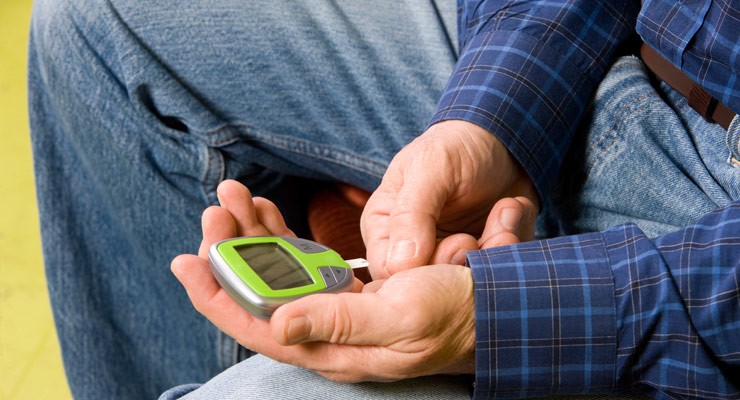How to Identify Hypoglycemia
It’s a serious issue if you have diabetes. Recognize the dangers of low blood sugar.

One minute you're feeling fine, and the next you're sweaty, shaky and dizzy. If you have diabetes, you might be showing signs of low blood sugar. It's important to be aware of and treat low blood sugar symptoms right away. Quick action could prevent an emergency.
Here are some commonly asked questions about low blood sugar:
Q: What is it, exactly?
A: Abnormally low blood sugar (glucose) is known as hypoglycemia. It’s sometimes called insulin shock or insulin reaction. It means your body is low on sugars to convert to energy. If you have diabetes and your doctor has recommended that you regularly check your blood sugar, it’s important to know what level is right for you. For example, if your blood sugar is below 70 mg/dL, that could mean trouble for some people
Q: What causes this condition?
A: Certain diabetes medications can cause the body to produce too much insulin. Or you may have skipped a meal, increased your physical activity or drank alcohol.
Q: What are some of the signs?
A: The symptoms often come on suddenly. It’s important to identify hypoglycemia and take care of it quickly. Low blood sugar can lead to accidents, injury, coma or death. Common reactions include a fast heartbeat, feeling shaky, hungry, sweaty, irritable, confused, tired or lightheaded. Some people cry out in their sleep, and bad reactions might include seizures or blacking out. Talk to your doctor about other signs of low blood sugar.
Q: How is it treated?
A: You need to quickly raise your blood sugar. Eat 15 to 20 grams of simple carbohydrates, after 15 minutes, recheck your blood sugar level. If your blood sugar is still below 70mg/dL, have another 15 to 20 grams. If you still don't feel better, or your blood sugar level remains below 70mg/dL, call your doctor or seek emergency help.
Q: Is it possible to have low blood sugar and not know it?
A: Yes. People with hypoglycemia unawareness may have low blood sugar and none of the early signs. If you think you have this condition, talk with your doctor.
Q: What are some examples of 15 grams of glucose or simple carbs?
A: Here’s a quick list to keep on hand to avoid blood sugar emergencies:
- Glucose tablets or gel tubes (follow instructions on package)
- 2 tablespoons of raisins
- 4 oz. (or ½ cup) of juice or sweetened soda (not diet)
- 1 tablespoon of honey, sugar or corn syrup
- Hard candies, jelly beans or gumdrops (read label for serving size; aim for 15 grams)
Q: What if I pass out and can’t help myself?
A: This is a medical emergency. It’s important to plan ahead for times you can’t answer. Make sure you have a friend, family member or neighbor on call, if you’re sensing an emergency. A prescription drug called glucagon can be injected for quick relief. Anyone you might call for help should be taught how to use this kit. Think about wearing a medical ID bracelet. And keep a snack on hand at all times.
Hypoglycemia prevention starts with following your diabetes treatment plan for timing meals, medications and exercise. Learn to spot the signs of low blood sugar and recognize when you might be having a reaction. Anticipating and treating a potential problem is always better than having an emergency!
By Ginny Greene, Contributing Editor
Sources
American Diabetes Association. Standards of medical care in diabetes 2019. Accessed July 26, 2019.
National Institutes of Health. National Diabetes Information Clearinghouse. Hypoglycemia. Accessed July 26, 2019.
American Diabetes Association. Hypoglycemia (low blood glucose). Accessed July 26, 2019.
Last Updated July 29, 2019
